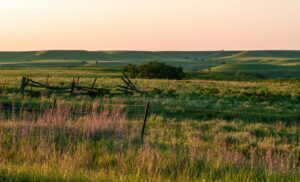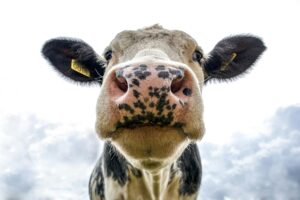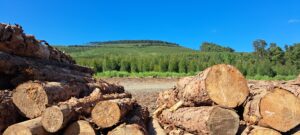
Planting trees in grasslands won’t save the planet – rather protect and restore forests
Why rangelands matter, and why misguided initiatives here do more harm than good …
Generally Indigenous Knowledge Systems (IKS) has a low profile in the country, which makes the “Indigenous medicinal plants” chapter quite a task every time we update the Agri Handbook! Imagine our delight to find out that Byron Maclean and Soozi van der Linde are medicinal plants experts!
Idealism without practical considerations is wearying, but these two individuals impress very quickly, and establish a sense that they know what they are talking about. They have big plans for the area, their contribution to the co-operative, but also supply the little strokes to build the case for what they are doing.
A medicinal plants centre is planned here. Why not? Many of the most useful indigenous plants, they tell us, grow within a thirty km radius of Rustler’s. Indigenous knowledge will be championed, says Byron, and a conversation built around it. Not only African but knowledge from around the world that fits this category.
In addition to a nursery for these indigenous plants, a commercial one is planned. This is intended to be a money-making enterprise. The conditions at Rustler’s are optimal for growing: at least twelve hours of sunlight every day. Much of the infrastructure has already gone up: a tunnel and shade cloth for covered growing. Racks, pipes are ready. The farm is just awaiting more funding.
Establishing a seed bank is seen as important. This will include indigenous food crops. Soozi speaks of the need to expand horizons, of not consuming only commercial plants. Indigenous crops use less water and are more hardy. Supplying the farm from this seed bank will mean the farm remains organic. They intend to expand from here, to propagate seed and become the preferred supplier to municipalities and such bodies. Established plants (as opposed to seedlings) will also be on offer.
A medicinal plant conservatory project will include the Traditional Healers Association, homeopaths and relevant parties. It will have educational and conservation purposes, tying in with what Rustler’s is all about. Travel and tourism is involved, planting days, harvesting days which employ people in the district, and tapping into the herbal market.
Plans for the nursery include fruit trees (trees can reverse climate change). Soozi points to where old cherry trees stand. She speaks of planting new trees between the older ones, giving the older ones a parent function. As we walk, van der Linde points to the swales on the farm, ridges constructed to retain water after rain. She speaks of other potentials on the farm: rainwater harvesting, the use of grey water for use in toilets. There are plans to have a borehole (indeed, Gino had excused himself from events this day to meet to borehole-related visitor).
Soozi and Byron have fifteen different courses and retreats planned. We are now standing at what will be the Healing Centre. Included among the medicinal plants and IKS courses are ones that are not horticultural at all, ones like yoga and meditating. They fit under the umbrella of the place though, and the objective of wellness and health. Ablution blocks are being constructed using the bricks made on the farm.
Soozi picks up on the permaculture credentials, potentials, of the place. Permaculture founder, Bill Morrison, gave his first training in this country here at Rustler’s Valley. Under the old owner, gardening was done for individual homesteads though; it was not a common (what today’s is).
She points to the rows of bluegums and speaks of the protection they provide for crops from the wind. Fire and water are the two major threats on the farm. To safeguard the farm, use is made of winter (to clear waterways) and summer (to ensure measures to deal with fire).
She points to the aloes, planted to keep soil in place. They have a flat root system and are ideal for this function. Aloes grow on the steep side of mountains; humans can copy the principle in using them. In addition to being a permaculturist and medicinal plant expert, Soozi champions biomimicry too.
Soozie is also qualified and registered as a carbon-footprints analyst, and ponders the implications of vehicles arriving/leaving Rustler’s, the mechanisation, livestock, the lifestyle. It is important to plant trees to offset carbon. Carbon is a waste product and I am not surprised to find that waste management is among her skills.
We are headed back for to the reception and our vehicles.

Why rangelands matter, and why misguided initiatives here do more harm than good …

Nitish Boodhoo, University of Guelph The confirmed presence of bird flu in American dairy cattle in a March 25 report from the U.S. Department of

Press release While life without plastic might be hard to imagine, there is a renewable, recyclable and sustainable alternative to single-use plastics and many other